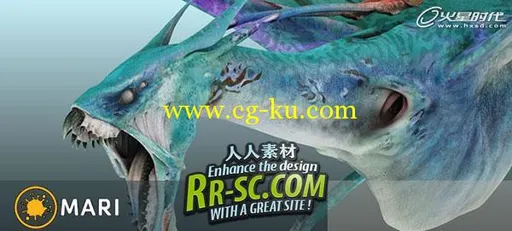本教程是由FXPHD出品的MARI阿凡达纹理绘制教程 。
Mari是由The foundry开发的一款具有创新概念的纹理绘制工具。在这次更新上,最重要的是Mari终于能够在Window下运作,并且还增加了如:TGA格式支持、FBX Camera导入等功能!
其实早些时候,Mari 针对Linux系统的版本已经发布了,事实证明,Mari非常受用户的欢迎,包括Framestore、Animal Logic、Double Negative和Digital Domain。现在Mari再次升级,可在Windows 7平台上使用。同时,Mari已经做好了在更多工作室环境下运行的准备。
MARI是一款全新的具有创造性的3D纹理绘制产品,最初在Weta Digital开发,主要用来解决高细节的纹理问题,后被用于影片《阿凡达》、《第九区》等的开发制作中。MARI能够轻松处理高细节——数以万计的复杂纹理——快速且简单.
MARI深受欢迎,并收到了来自各式各样的纹理绘制社区的预定请求,这其中不乏Double Negative和Framestore这样的大客户。
Dobule Negative的CEO Matt Holben说,“最近几年,在Weta开发MARI之前,全世界的纹理绘制开发都略微显得有些刻板。当新的格式已经成为标准,我们正面临着不断增长的规模和细节的需求。MARI就是我们一直在等待的这么一款产品。我们已经把它利用在了我们的产品上,并且非常有信心购买这款软件——甚至是预定。”
Framestore的系统支持主管Christophe Meslin说,“我们的艺术家非常惊讶MARI创造的效果,并且把它用在了实时的项目当中。MARI参与了我们整个流程的开发,并释放出了艺术家最擅长做的事情——绘画。”
MAR101 – Introduction to Mari | 1.91GB1.91 GB
Professor: Gareth_Jensen
Our first ever course in Mari is designed to get everybody up to speed with this new and excitingly powerful 3D painting package from The Foundry. Mari is a great leap forward in professional texture painting by being both users friendly and capable of dealing with a staggering large amount of resolution. Professor Gareth Jensen been working with Mari for the past few years as it was developed at Weta Digital and has continued to use it at Double Negative where he currently works. fxphd members will have access to Mari on Linux via the fxphd VPN.
Jensen comes from a background of physical film effects including make-up/prosthetics and painting ranging from props through to miniatures. Mari allows him to take a similar approach to texturing a digital asset by automatically seaming multi-patch UV’s giving a much more complete hands-on feel, similar to that of painting a physical model.
In this course we will be covering the basics to get you up and running, including a breakdown of the tools and palettes that you will find yourself most often using. We will be covering such great tools as paint through, heal/tow and the remarkable warping tools. We will going through the concept of Mari’s shaders and channels system as well as its comprehensive masking options.
Over the course of the term we will be taking an asset from start to finish. f you work like Jensen you probably like using all the tools at your disposal so we will also show how Mari works easily with other packages. I will be going over basic process of working in conjunction with Nuke and also the wonderfully ** to use camera projection set up for all your Photoshop projections.
In Jensen’s 10 years of experience within the film industry, he has had the opportunity to work for both physical effects as well as digital and even began his career as a creature actor for Lord of the Rings. Having previously studied make-up and prosthetics for film in New Zealand his role in the industry further progressed with the renowned Weta Workshop where he was involved in major productions such as King Kong, 30 Days of Night, District 9, Prince Caspian and more recently Avatar. Developing his skills amongst some of the best artists in the industry, Jensen has also trained as a creature and props painter and it was during the production of Avatar that he made the decision to expand his role into the digital world. Switching over to Weta Digital as a texture and look dev artist on Avatar, Jensen has been able to work with Mari during its development and has now used it for over 2 years and is continuing to use it within Double Negatives production pipeline. His background in physical effects has left him with a strong base understanding of how to paint realistic textures and being able to use Mari as his digital medium has made this transition a lot smoother.
Class 1:
A guided tour of the Mari GUI introducing the contents of the toolbox and a brief overview of the pallets. We will also be looking at setting up your project and talk about the subject of resolution.
Class 2:
Approaching an asset by gathering ideas and putting a solid aim together. We will be covering setting up projectors in Mari and using them with Photoshop to design a paint scheme. I will also show you how to create and store custom palettes inside Mari.
Class 3:
In this class we look at cleaning up our projections and become familiar with object handling and fast paint application using both 3D and UV views.
Class 4:
An introduction to the Mari shader system and a demonstration in how to use Mari with Maya texturing tools.
Class 5:
In this class we will be learning how to version up geometry in the object tab, as well as how to paint a metal mask.
Class 6:
In this class we will start to combine the powerful tools and methods we have learnt so far to create interesting and believable rust masks.
Class 7:
In this class we will be looking at ways to use textures in Mari that have been produced in other applications. We will also be going over techniques for weathering your asset.
Class 8:
In this class I will be showing you how to bake shaders out of Mari and also how to apply the power of Nuke to your texturing workflow.
Class 9:
Painting a human hand, in this class I am going to show you one approach to painting skin in Mari. Part 1 of 2.
Class 10:
Painting a human hand, in this class I am going to show you one approach to painting skin in Mari. Part 2 of 2
115



发布日期: 2011-5-17